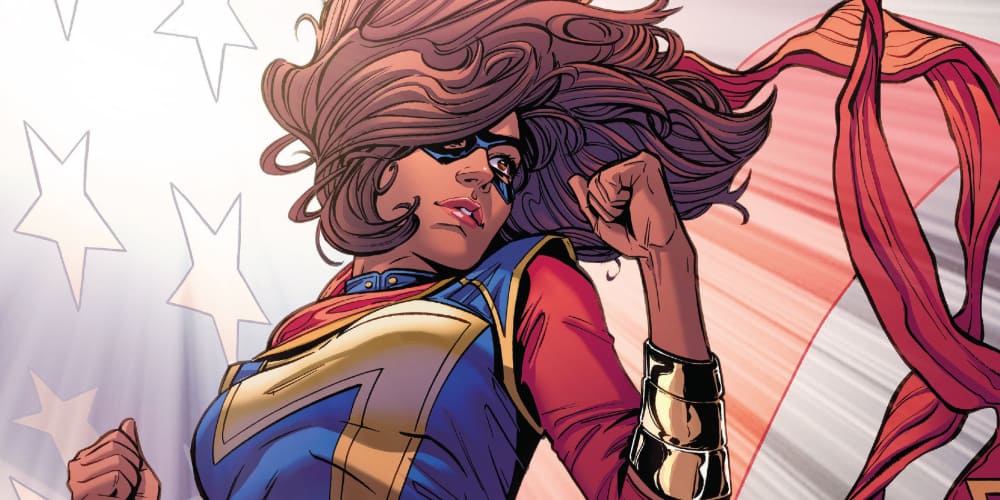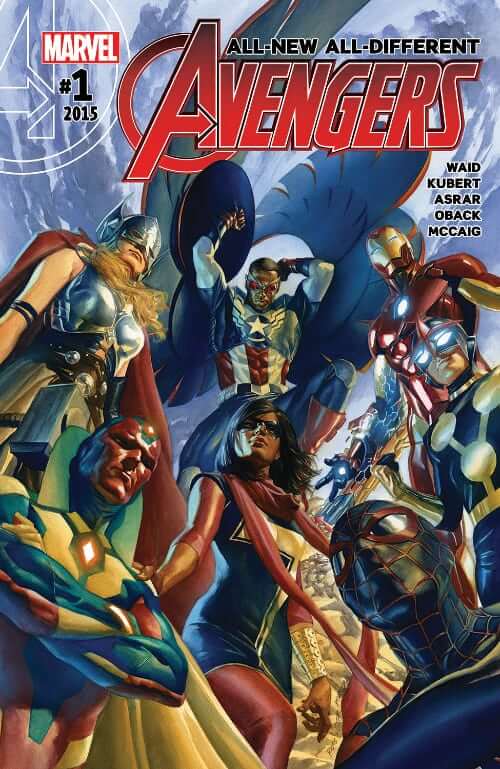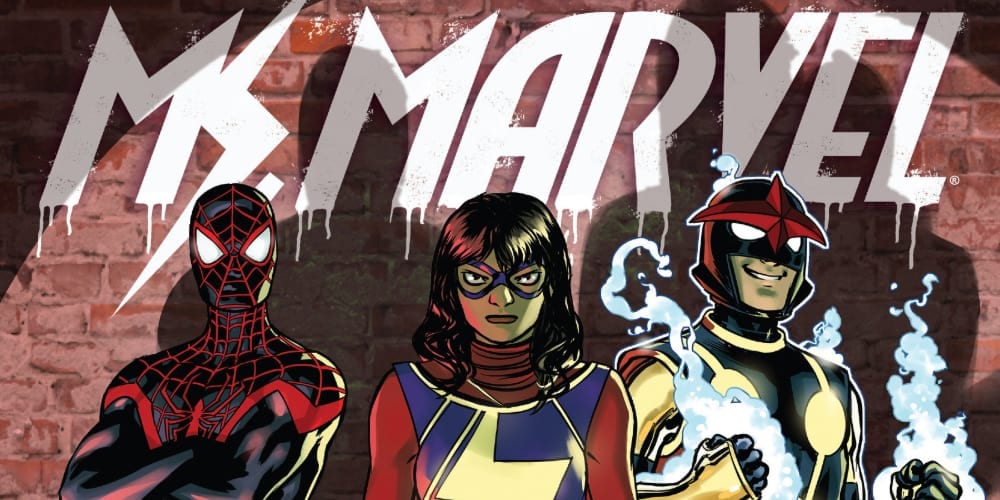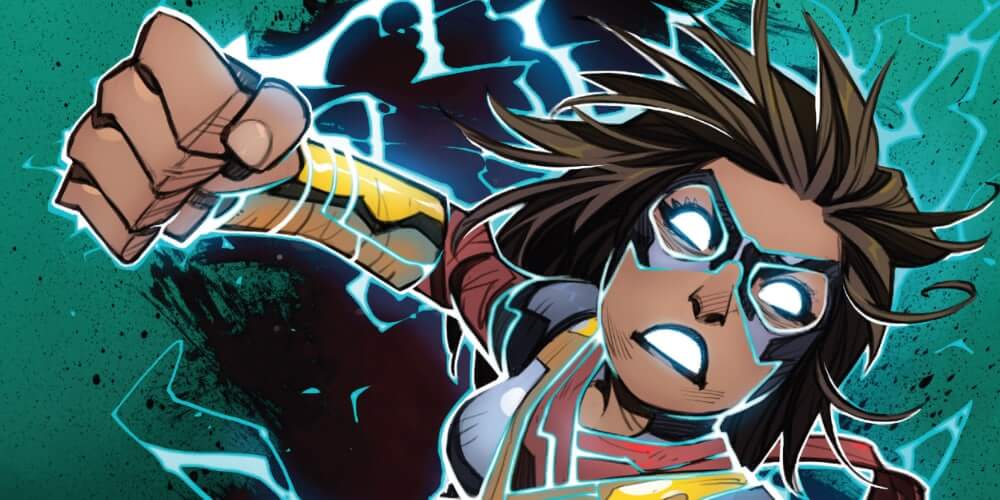Women’s History Month Graphic Novel Spotlight: Ms Marvel, By G Willow Wilson
When Ms Marvel #1 introduced the world to Kamala Khan back in 2013, not only did the series become a runaway success, but the name G Willow Wilson quickly became one of the most recognized in the comic book community. Marvel never expected that Kamala Khan would become such a popular hero. The character went against everything that made a #1 issue sell well. In 2013, people still considered non-white male characters a gamble. But Kamala Khan sold well. But even if there weren’t issues with diverse characters, Kamala was a new character. Legacy characters sell well, not new ones. Yet G Willow Wilson’s vibrant and down-to-earth style made Ms Marvel a hit, and one of the most important character debuts in comic book history.
G Willow Wilson and Ms Marvel Rocket from Unknown to Everywhere

(Image: Ms Marvel (2015) #13, cover by Joelle Jones and Rachelle Rosenberg, Marvel Comics)
Before Ms Marvel, G Willow Wilson had a few minor titles and successes. Her graphic novel Cairo is a hidden gem. And her novel Alif the Unseen is one of the best modern fantasies of our time, mixing technology and Middle Eastern folklore into something beautiful and epic. Most readers knew her from her Vertigo title, Air. She also had a few random DC one-shots and issues. Then we get to Kamala Kham, and Wilson becomes a Marvel Comics Rockstar.
However, while G Willow Wilson became a prominent name, Ms Marvel went from the new kid on the block to a legacy character in less time than it takes actually to create a legacy. Less than three years after her debut, Kamala Khan was—literally—front and center on the cover of Mark Waid and Adam Kubert’s All-New, All-Different Avengers.

(Image: All-New All-Different Avengers, by Mark Waid, Cover by Alex Ross, Marvel Comics)
This year, she’ll be a playable character in the new Marvel’s Avengers game. And to top it off, she’s the only character to debut after the MCU started to get her own on-screen title. Her Disney+ series joins She-Hulk and Moon Knight in the second wave of their Marvel shows. That jump in cultural relevance is incredible.
G Willow Wilson and Ms Marvel are the Heroes W

(Image: Ms Marvel (2015) #18, by G Willow Wilson, cover by Nelson Blake and Rachelle Rosenberg, Marvel Comics)
Ms Marvel isn’t a popular character because she’s cool; she’s popular because G Willow Wilson made her incredibly relatable. I often use Ms Marvel Vol 1: No Normal when I teach graphic novel literature courses, especially to first-year college students. As I wrote for Monkeys Fighting Robots:
“This is me. Kamala is me,” one of my students said. She described her parents, very religious and very protective. They routinely tried to set her up with the boys they approved of. Prayer and worship were routine. And instead of therapists, she and her siblings were told to see their religious leader. It would almost be exactly like Ms. Marvel’s experience if my student weren’t a white Christian American from the South. She’s also far from the only non-Muslim student to comment on how much they could relate to G. Willow Wilson’s Kamala Khan.”
My students love Ms Marvel, and most of them went on to buy the rest of the G Willow Wilson run, which she wrapped last year. Kamala Khan is like Peter Parker 2.0. One of the biggest reasons Spider-Man was so successful was because of how ordinary Peter was beneath the mask. We’re supposed to aspire to be like these heroes, but for so long, they were too grandiose. Stan Lee and Jack Kirby changed that with Peter Parker. G Willow Wilson took it a step further.
They are Also the Heroes We Deserve

(Image: Ms Marvel (2015) #8, by G Willow Wilson, cover by Cameron Stewart, Marvel Comics)
Even though Peter Parker is a more relatable character, there is still. As Alex Abad-Santos of Vox said:
Although fans have often been asked to imagine themselves as the heroes they admire, the pervading idea has been that comic books featuring legacy heroes who are mostly men — and mostly white men at that — were the only ones that could be successful, since they traditionally had the biggest sales (correlation and causation be damned).
Ms. Marvel changed that narrative. Since the series launched, its protagonist Kamala Khan and its massive success have proved to Marvel that not only could its A-list heroes stand to look more like the wide array of people who read and love Marvel comics, but also that its loyal readers could relate to a hero who doesn’t look like the traditional model.
It’s always a bit awkward to talk about race and gender issues in comics. Trolls tend to come out. But Abad-Santos makes an important point here. Kamala proved that heroes don’t have to be a white male to be a superhero. G Willow Wilson, through Ms Marvel, will help usher in a new era of heroes.
Let’s Not Forget the Other People Who Helped G Willow Wilson Create Ms Marvel

(Image: Ms Marvel (2015) #8, by G Willow Wilson, cover by Cameron Stewart, Marvel Comics)
In comics, it’s never one person creating something—it takes an entire team. This is true tenfold for superhero comics from the Big 2. Editors, artists, color artists, inkers, letterers, designers, etc. We might scoff at the $3.99 price tag that comics carry, but when you consider how much effort goes into those 20 pages, it’s a steal. G Willow Wilson might be the mastermind behind Ms Marvel, but creator credits always go to at least two people: writer and artist. For Ms Marvel, however, the comic would have never existed without Marvel editor Sana Amanat.
Amanat directly inspired part of Ms Marvel’s origin. In the comics, Kamala Khan looks up to Carol Danvers. She wants to be her…a white woman. When her powers first manifest, that’s precisely who she transforms into. Amanat, “growing up as a Pakistani American in a predominantly white New Jersey suburb, she looked at the art of women who were blond and white as if that were the ideal for beauty. And in that world, young Sana wanted to be white herself” (Washington Post).
Kamala Khan is In the Hands of a New Superstar

(Image: The Magnificent Ms Marvel #11, by Saladin Ahmed, cover by Eduard Petrovich, Marvel Comics)
Superheroes are eternal. They continue on after their creators finish telling the stories they want to tell. Eventually, they have to pass the pen to the next writer. In this case, the writer Marvel entrusted Kamala Khan to shows just how important a character she is. When G Willow Wilson debuted Ms Marvel, she was relatively unknown despite having an Eisner nomination for Air. With Saladin Ahmed, Marvel is using a now well-known character to boost one of their best writers further. Ahmed’s first comic, Black Bolt, won an Eisner for best new series. He has a few hits already despite only three years into his career with Marvel. And like Wilson, he wrote a phenomenal fantasy novel (well, series) based on Middle Eastern mythology, Throne of the Crescent Moon.
But anyone who writes Ms Marvel, now or in the future, is indebted to G Willow Wilson. Ans as comic readers? We’ll enjoy her run for years to come.
(Featured Image: Ms Marvel (2015) #5, by G Willow Wilson, cover by David Lopez)
Women’s History Month Graphic Novel Spotlight: Ms Marvel, By G Willow Wilson
Roman Colombo
from Comic Years https://ift.tt/2U24Wq0
https://ift.tt/2WbIsps

0 comments:
Post a Comment